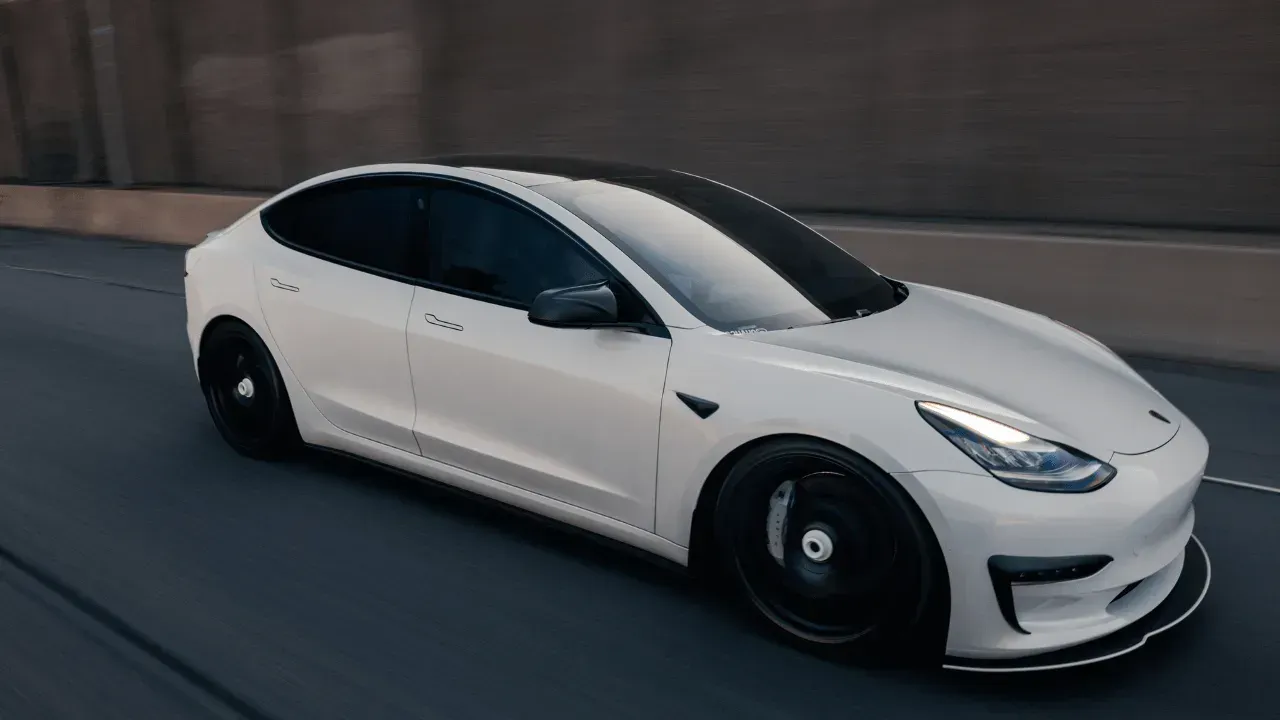Colorado Truck & Fleet Operator Insurance

8:30am - 5:00pm Mon-Fri
We'll Reply in 15min*
Index
Contact Us
Phone
303-421-5123
Location
9035 Wadsworth Parkway
Suite 2730B
Westminster, CO 80021
Colorado’s booming freight economy has elevated the Centennial State to a strategic crossroads for goods moving between the Midwest, the Rocky Mountains, and the Pacific Coast. With more than 15,000 registered motor carriers and an estimated 215,000 commercial trucks operating on state highways, the need for well-structured truck and fleet insurance has never been greater. This guide explains the legal framework, coverage choices, premium factors, and best practices that matter most for owners, safety managers, and independent drivers who call Colorado home.
Drawing on Federal Motor Carrier Safety Administration (FMCSA) statistics and up-to-date state accident data, the article outlines practical steps to mitigate risk and control operating costs. Readers will learn which policies are compulsory, which are optional but wise, and how to navigate claims without disrupting critical delivery schedules. Whether the operation consists of two refrigerated tractors or two hundred mixed-use units, the same foundational principles apply.
The Colorado Trucking Landscape
Colorado ranks ninth nationally in ton-miles shipped per capita, according to the American Transportation Research Institute. The mix of commodities that pass along the I-70 corridor ranges from fresh produce grown on the Western Slope to high-value aerospace components produced along the Front Range. Elevation extremes and unpredictable alpine weather create unique hazards, contributing to an average of 1,700 large-truck crashes annually, roughly 28 % of which involve jackknifing or brake failure on steep grades. Understanding these geographic and meteorological challenges is the first step toward tailoring insurance protection that addresses real exposure rather than generic assumptions.
Fleet structures are equally diverse. Thirty-eight percent of Colorado trucking companies operate fewer than five power units, while 12 % manage fleets larger than fifty. The prevalence of small and mid-size enterprises means many operators juggle dispatching, compliance, and insurance decisions without an in-house legal team. Insurers therefore design flexible programs, allowing owners to scale limits as new trailers, drivers, or client contracts come online. Recognizing this diversity helps brokers craft endorsements that match each firm’s cargo type, route territory, and driver experience profile.
In recent years, e-commerce growth has also boosted short-haul and last-mile delivery fleets within Denver,
Colorado Springs, and Fort Collins. These trucks often face dense traffic, tight loading zones, and elevated theft risk. Consequently, underwriters now scrutinize urban exposure just as closely as long-haul mileage. A carrier that toggles between mountain passes and downtown alleys must demonstrate distinct safety protocols for each environment to secure favorable premiums.

Legal Foundations: State & Federal Requirements
All for-hire carriers crossing state lines must comply with FMCSA minimum liability limits of $750,000 for general freight or $5 million for certain hazardous materials. Colorado adopts those federal rules and adds its own intrastate mandates under CRS 40-10.1-112. Intrastate carriers transporting household goods, for example, must carry at least $300,000 in combined single-limit (CSL) liability, while oilfield equipment haulers need $1 million. Failure to maintain active filings (Form E for intrastate or Form MCS-90 for interstate) can result in immediate revocation of operating authority and stiff daily fines.
Workers’ compensation is compulsory for every driver classified as an employee, regardless of fleet size. Colorado’s Division of Workers’ Compensation has an occupational accident alternative for owner-operators, yet most shippers now insist contractors show proof of either comp coverage or a robust occupational accident policy before freight is assigned. Additionally, trailers exceeding 10,000 lbs gross vehicle weight require evidence of financial responsibility when registering with the Division of Motor Vehicles, reinforcing the need to synchronize insurance renewals with vehicle plates.
Environmental liabilities are another regulatory focal point. Colorado’s Department of Public Health & Environment enforces
spill-response guidelines stricter than adjoining states. A diesel release over 25 gallons triggers mandatory reporting and clean-up supervised by certified contractors. Pollution legal liability coverage, while not mandatory, is increasingly requested by lenders and freight forwarders because remediation costs routinely surpass $100,000, even for modest roadside incidents.
Core Insurance Coverages
Primary auto liability sits at the heart of every trucking insurance portfolio. It pays third-party bodily injury or property damage claims and covers legal defense costs. Insurers calculate limits based on cargo class, travel radius, and contractual demands from freight brokers. Many Colorado carriers voluntarily raise limits to $1 million CSL—even when hauling only non-hazardous freight—because this level has become the industry’s de-facto broker minimum.
Physical damage insurance protects the tractor or straight truck itself. Policies include comprehensive and collision sections, with deductibles typically ranging from $1,000 to $5,000 per occurrence. Underwriters examine vehicle age, financed status, and the presence of anti-theft technology such as electronic engine immobilizers. Given Colorado’s heightened risk of hailstorms on the Eastern Plains, comprehensive claims frequency is roughly 22 % greater than the national trucking average, nudging deductibles upward in exchange for stable rates.
Cargo insurance rounds out the triad of essential policies. Coverage responds to loss, theft, or damage to freight while in the carrier’s care, custody, or control. Standard limits hover between $100,000 and $250,000, but specialized shipments—microchips, hemp products, or craft beverages—often require $500,000 or higher. Policy forms can be “all-risk” or “named peril,” the latter excluding unattended vehicle theft unless certain protective measures are documented. Reading these exclusions carefully prevents coverage gaps during layovers along US-285 or in metro distribution yards.
Specialized Policies for Fleets
Excess liability (also called umbrella) supplies an extra layer above primary auto and general liability policies. Severe crash litigation has produced “nuclear verdicts” topping $10 million, and Colorado’s courts have shown a willingness to award punitive damages when systemic safety failures are documented. An umbrella of $2 million to $5 million therefore offers a cost-effective backstop compared with raising all underlying limits individually.
Non-truck auto, sometimes labeled “bobtail” or “deadhead” coverage, pays when a tractor operates without a trailer or outside dispatch directives. Many owner-operators mistakenly assume primary liability applies 24/7, but most policies contain a “business use” clause. Gaps commonly arise when drivers run personal errands between loads or reposition equipment for repairs. Purchasing non-truck auto closes this loophole and often satisfies leasing company requirements.
Other specialized policies include roadside assistance, rental reimbursement, refrigeration breakdown, and contingent cargo. Refrigeration breakdown deserves special attention in Colorado because fresh produce and pharmaceutical shipments frequently originate at altitude, where compressors work harder. If a reefer unit fails on Vail Pass and lettuce warms above 45 °F, the resulting load rejection may cost $60,000. Adding this endorsement can be as little as $350 annually per trailer, far less than absorbing a single spoiled shipment.

Key Risk Factors in Colorado
Mountain grades dominate risk discussions. The steepest run—the infamous 7 % descent on I-70 westbound from the Eisenhower Tunnel—generates nearly one-third of brake-overheat events logged by Colorado State Patrol’s mobile inspection teams. Carriers that document driver training on runaway-ramp protocol and maintain brake-temperature monitoring systems often secure 5 % to 8 % premium credits from niche insurers.
Winter weather amplifies risk. CDOT data show that from November through March, crash frequency involving commercial vehicles climbs 42 % compared with summer months. Black ice on US-40 and high winds through Glenwood Canyon demand tire chains, but improper installation can damage axles, prompting costly physical damage claims. Insurers react by considering average annual snowfall along primary routes and, in some cases, require proof of mandatory chain-up training within driver files.
Theft and cargo pilferage are rising threats in urban yards. Denver County reported a 19 % increase in trailer break-ins last year, driven partly by organized crime targeting electronics and legal cannabis products. Many cargo policies apply a sublimit—or outright exclusion—for high-theft commodities if trailers are left unattended within a 50-mile radius of the pick-up point. Choosing yards with perimeter fencing, 24-hour surveillance, and electronic gate logs can persuade underwriters to waive these exclusions or lower deductibles.
Cost Drivers and Premium Calculation
Premiums hinge on a complex matrix of loss history, driver records, vehicle specs, and commodities hauled. According to a 2023 report from the Colorado Motor Carriers Association, fleets with fewer than five power units paid an average of $17,240 per truck for combined coverage, whereas larger fleets enjoyed economies of scale around $12,600 per truck. A clean loss run spanning three years can slice 15 % off renewal quotes, while a single at-fault crash involving bodily injury often jumps the base rate by 20 % to 40 % for at least two policy terms.
Driver Motor Vehicle Records (MVRs) carry heavy weight. An MVR score with more than two moving violations in 36 months usually triggers a driver surcharge or, in severe cases, disqualification from the carrier’s schedule. Colorado’s graduated fine system for speeding and cell-phone infractions means violations not only increase insurance costs but can jeopardize a Motor Carrier Safety Rating, reducing load opportunities from cautious brokers.
Equipment factors round out premium calculations. Late-model tractors equipped with lane-departure alerts, forward-facing cameras, and adaptive cruise control are statistically linked to 22 % fewer liability claims, according to the Insurance Institute for Highway Safety. Insurers reward such technology with discounts ranging from 3 % to 10 %. Conversely, older trailers lacking anti-lock braking systems may attract higher physical damage rates or steeper collision deductibles.
Selecting an Insurance Partner
The Colorado market hosts a blend of national carriers, regional mutuals, and industry-specific risk retention groups. While price is important, service capabilities—especially claims handling and regulatory filing accuracy—often define real value. Carriers that maintain electronic interfaces with the Colorado Public Utilities Commission can file Form E certificates within 24 hours, ensuring new operating authorities aren’t delayed. When evaluating insurers, fleet managers benefit from requesting sample certificates, reviewing AM Best financial strength ratings, and confirming the availability of a dedicated trucking claims unit.
Brokers serve as translators between fleet risk profiles and underwriting guidelines. A broker with deep commercial trucking focus can pre-shop telematics data, maintenance logs, and driver scorecards to multiple insurers, leveraging competitive tension in the quoting process. For start-ups, the broker’s ability to navigate surplus-lines markets is vital, because standard carriers may require three years of prior operations. Reviewing broker license status with the Colorado Division of Insurance and seeking peer references from similar fleets weeds out generalists and identifies true specialists.
Captive arrangements, where several like-minded fleets pool premiums to self-insure a portion of risk, have gained traction as mainstream rates climb. Operators with at least 25 power units, stable loss ratios below 40 %, and robust safety cultures may qualify. Captives demand long-term financial commitment and stringent entry audits, yet participants often see 10 % to 15 % total cost of risk savings after the first three years.
Risk Management & Safety Programs
An insurer’s respect for a fleet often mirrors the quality of its documented safety program. Elements typically reviewed include a written hiring policy, mandatory road tests, quarterly safety meetings, and a progressive disciplinary ladder for violations. Installing forward-facing dash cams and sharing footage for coaching rather than punishment alone has reduced preventable accidents by 17 % in pilot studies conducted by Colorado State University’s Center for Health, Work & Environment.
Preventive maintenance also influences premiums. Maintaining electronic maintenance records and adhering to the Commercial Vehicle Safety Alliance (CVSA) out-of-service criteria can cut both downtime and insurance costs. Carriers who participate in CDOT’s courtesy brake-check events each autumn often uncover wear issues before winter, trimming physical damage claims resulting from brake failures later in the season. Underwriters acknowledge such proactive behavior with deductible reductions or lower rates.
Emergency response planning rounds out a top-tier program. Having a spill-kit manifest, pre-arranged towing contracts, and a single after-hours notification procedure speeds containment and reporting, minimizing claim severity. Insurers may assign an environmental adjuster when the first call arrives within one hour of an incident; delays beyond four hours routinely add 25 % to total remediation costs because of chemical migration or expanded regulatory oversight.
Claims Handling in Real-World Scenarios
When a crash occurs, time is critical. Colorado’s statute of limitations for bodily injury claims is three years, but evidence integrity decays rapidly. Dispatchers should activate a chain-of-custody protocol that preserves electronic logging device (ELD) data, dash-cam footage, and driver statements. Prompt submission to the insurer—ideally within 24 hours—allows rapid assignment of field adjusters and defense counsel. Carriers that habitually delay reporting by more than one business day face an average 18 % higher claim payout, according to industry benchmarking firm Advisen.
Subrogation is a key component of claim economics. Nearly 13 % of Colorado truck accidents involve a negligent third party, such as a passenger vehicle cutting off a tractor on I-25. Insurers with robust recovery departments can recoup losses and preserve loss ratios, directly influencing future premium negotiations. Fleets can accelerate subrogation by supplying police reports, witness contacts, and scene photographs along with the initial loss notice.
Post-incident corrective action helps curb repeat events. Root-cause analysis often pinpoints systemic issues—insufficient route planning or lax pre-trip inspections—that contributed to the loss. Documenting these findings and integrating new controls demonstrates to underwriters that the event was an anomaly rather than a pattern. Some insurers even provide grant funding or device subsidies to implement recommended improvements, converting a negative moment into long-term gain.
Future Trends and Regulatory Outlook
Telematics data integration is reshaping underwriting. Colorado’s high-altitude terrain makes real-time tire-pressure monitoring and brake-temperature sensors especially valuable. Within two years, most national carriers anticipate offering usage-based pricing for fleets agreeable to continuous data sharing. Early adopters could see double-digit premium reductions, but privacy compliance and data security will move to the forefront of contract negotiations.
The state legislature continues to explore ways to balance infrastructure funding with environmental protection. Proposed emissions-based fees might incentivize accelerated turnover to cleaner engines, yet older equipment slated for replacement poses elevated mechanical-failure risk in the interim. Insurance underwriters may impose age-based surcharges or require additional inspections on trucks exceeding 20 model years, amplifying cost pressures until modernization completes.
Autonomous and semi-autonomous convoy technology is undergoing live trials along the stretch of I-70 between Limon and Aurora. While full autonomy remains years away, advanced driver-assistance systems (ADAS) are already lowering accident frequency. Expect policy wording to evolve, clarifying liability between software providers, vehicle manufacturers, and carriers. Early policy drafts suggest a hybrid model in which primary liability remains with the carrier, but technology firms assume a contractual indemnification layer for algorithmic faults.
Frequently Asked Questions
Do intrastate carriers need an MC number? Not unless crossing state lines, but an intrastate DOT number and Form E filing are mandatory.
Can personal auto insurance cover occasional box-truck rentals? No. Even a short-term commercial rental requires motor carrier liability, and the rental firm’s damage waiver rarely satisfies broker or shipper standards.
Is cargo insurance required by law? The FMCSA mandates cargo coverage only for household goods movers; nonetheless, most brokerage contracts and shipper service agreements make it effectively compulsory.
How often should a fleet shop insurance? Competitive bidding every two to three years is common, but fleets with improving loss trends may benefit from annual market checks to capture savings sooner.
What deductible level strikes the best balance? For small fleets, a $1,000 to $2,500 physical damage deductible mitigates cash-flow strain. Larger fleets often self-insure the first $5,000 to $10,000 to gain lower premiums.
Conclusion
Colorado’s breathtaking scenery and dynamic economy come with equally complex insurance demands for truck and fleet operators. Adhering to state and federal mandates, selecting tailored coverage limits, investing in safety technology, and partnering with specialized brokers collectively create a resilient risk-management framework. In a climate where a single claim can threaten business continuity, proactive planning and informed policy decisions separate thriving carriers from those left idling on the shoulder. By applying the insights outlined above, Colorado fleets can navigate mountain passes and market challenges with confidence and financial security.




